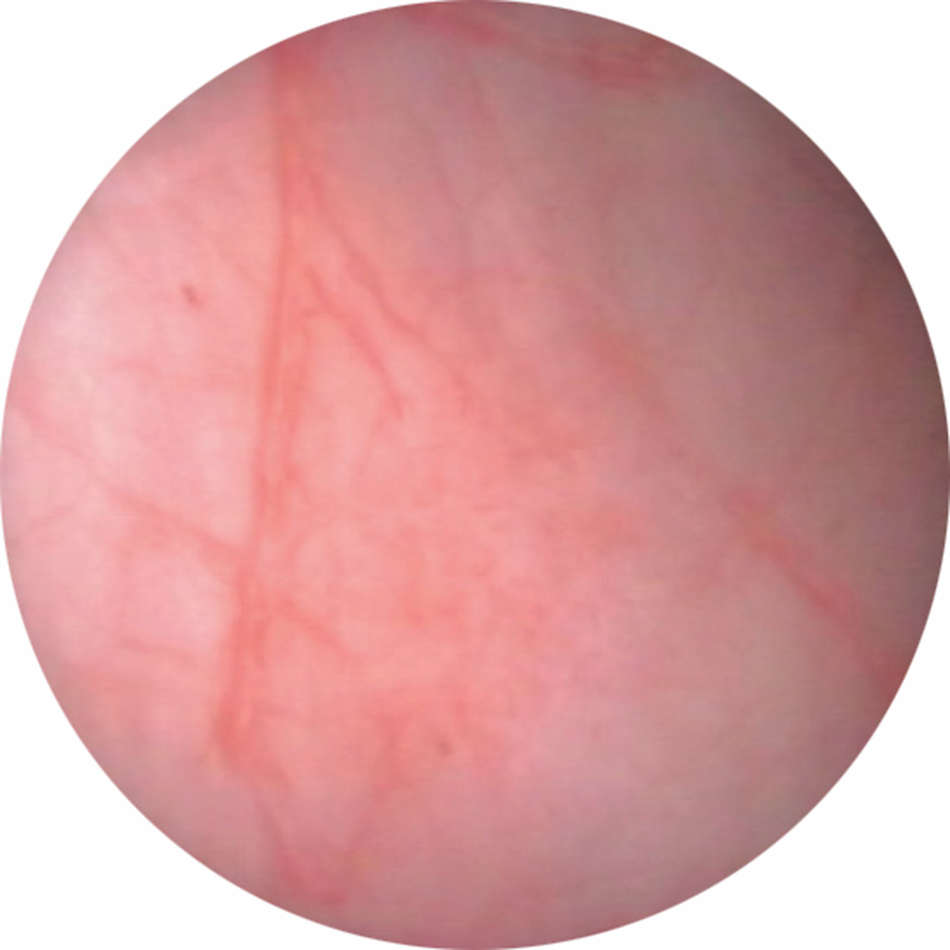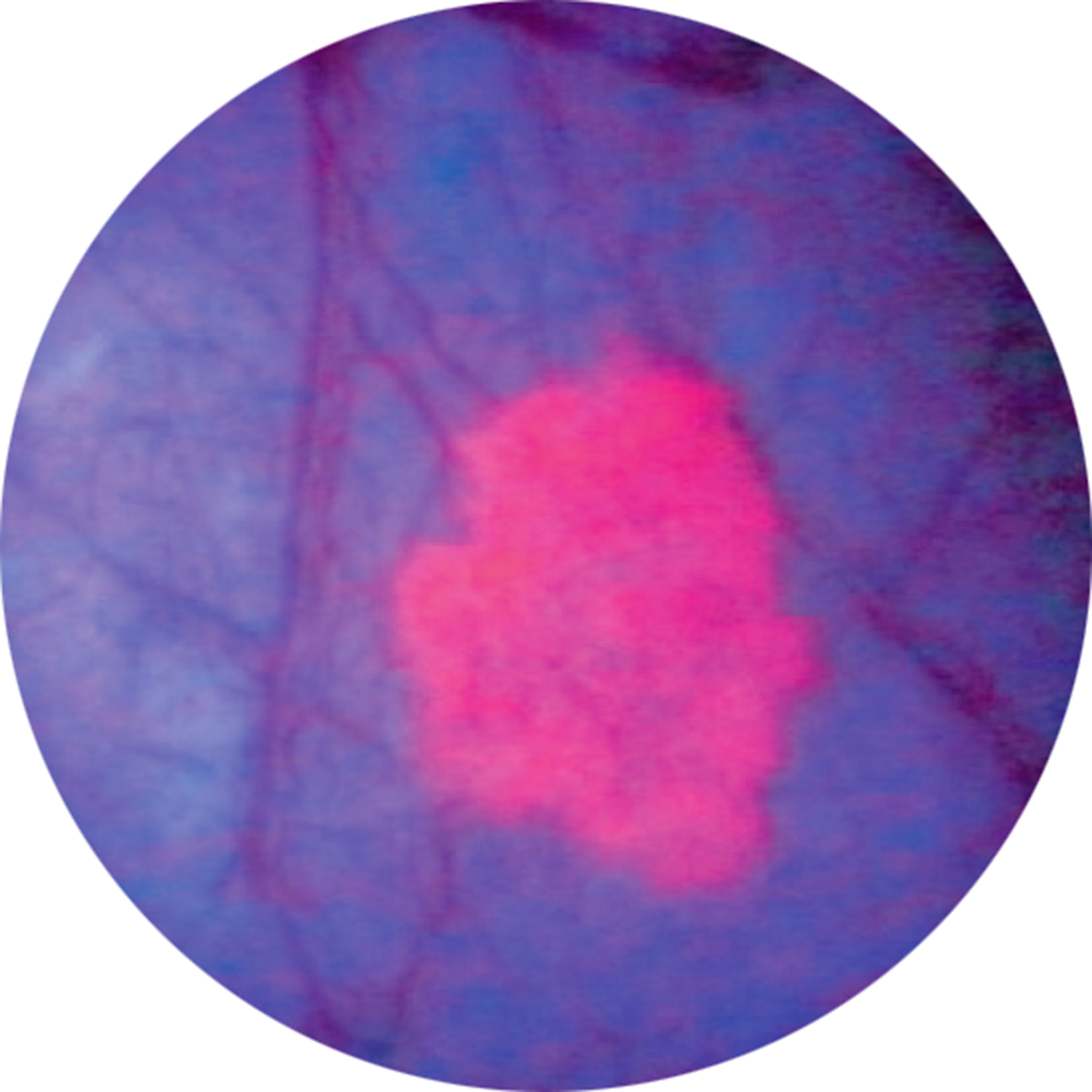The Urologic Oncology Program at Rutgers Cancer Institute and Robert Wood Johnson University Hospital offers blue light cystoscopy with Cysview® (hexaminolevulinate hydrochloride) to help improve detection of certain bladder cancers. Cysview is an optical imaging agent that makes non-muscle invasive bladder cancer glow bright pink in blue light, enabling urologists to better see and remove tumors with greater accuracy. This FDA-approved diagnostic and treatment approach is included in bladder cancer guidelines recommended by the American Urological Association (AUA) and the Society of Urological Oncology (SUO).


Image left: Bladder image with white light cystoscopy. Image right: Same bladder image with blue light cystoscopy with Cysview®
What Is a Cystoscopy?
A cystoscopy is a procedure in which urologists visually inspect the inside of the bladder using a cystoscope, which is a long, thin tube that includes a video camera on the end. A standard cystoscope uses regular white light to illuminate the inside of the bladder.
What Is Blue Light Cystoscopy?
Blue light cystoscopy uses a cystoscope equipped with both white and blue light. Before the procedure, a small amount (less than 2 oz.) of the prescription imaging agent called Cysview (hexaminolevulinate HCl). is placed into the bladder using a catheter. Cysview makes bladder cancer cells glow pink in blue light.
What are the Benefits of Blue Light Cystoscopy?
Because the Cysview imaging agent causes bladder cancer cells to glow bright pink in blue light, urologists are better able to see smaller tumors and flat lesions that may not be seen with white light in a standard cystoscopy. The urologist can immediately remove diseased tissue and hard-to-see tumors during the procedure, leaving healthy tissue intact.
Who is Eligible for Blue Light Cystoscopy with Cysview?
Anyone who is suspected of having or is known to have bladder cancer can have a blue light cystoscopy with Cysview, although patients should always speak to their provider about risks and benefits of this procedure based on their individual health.
How does Blue Light Cystoscopy Work?
At least one hour before the procedure, the imaging agent Cysview is instilled into the bladder through a catheter. Cysview, is a variant of a naturally occurring molecule in the body that results in increased production of another natural compound. It makes tumor cells glow bright pink in blue light. During the procedure, the bladder is examined with a cystoscope under both white light and blue light. If any suspicious tissue or tumor is detected, it is removed and sent for further examination (biopsy). Cysview is expelled from the body through urination within 72 hours.
Is Blue Light Cystoscopy Safe?
Clinical studies have shown that blue light cystoscopy is safe and well tolerated. Patients should discuss with their provider if the procedure is right for them based on their individual health history.
Do Providers Need Special Training for this Procedure?
Yes. Urologists require special training to use Cysview and the cystoscope that has both white and blue light.
Is Blue Light Cystoscopy with Cysview Covered by Insurance?
Many insurance plans do cover blue light cystoscopy with Cysview, but coverage can vary widely. Some insurance plans do not cover it at all. Medicare covers it in certain circumstances. It is recommended that you contact your insurance company directly to verify what your financial responsibility will be. Consultations with our Financial Counselors are available in person or by calling 732-235-8067.
Related Articles and Press
Blue Light Cystoscopy for Bladder Cancer
Learn more about how blue light cystoscopy is used to help patients with bladder cancer with Dr. Vignesh T. Packiam.

